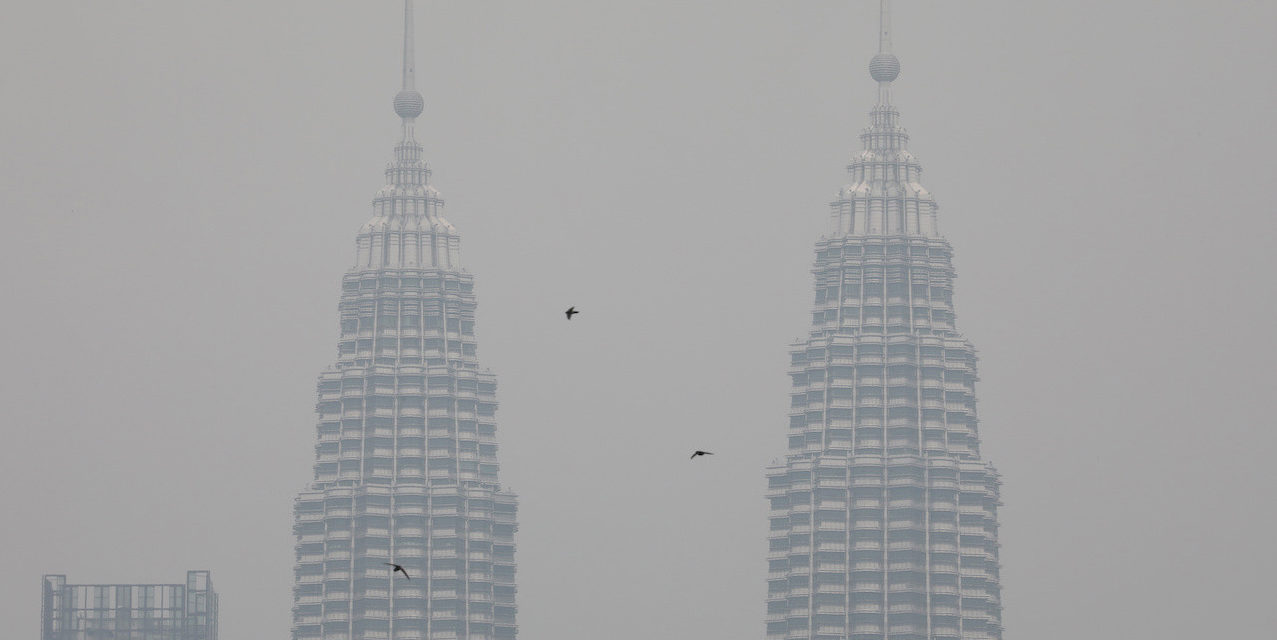Hundreds of schools have been subject to closures after air pollution reached unhealthy levels in Malaysia this week. The state of Sarawak has particularly suffered from the thick smog that has reached much of Malaysia recently. On Tuesday, air pollution readings in Sri Aman, a town in Sarawak, reached 367, falling under the ‘hazardous’ classification.
Sarawak lies near the border of Indonesia’s Kalimantan where forest fires have been raging for weeks, sending thick smoke across Malaysia. Other parts of the nation have not been faring much better with four areas reaching the ‘very unhealthy’ side of the spectrum while 28 other areas have been classified as ‘unhealthy’.
Nonetheless, it isn’t just Indonesia and Malaysia affected by the fires. Singapore has been hit by the worst levels of air pollution since 2016. Schools and flights have been affected by the ongoing haze and the government have responded by setting up emergency health centres and distributing masks. Similarly, in Southern Thailand, officials have handed out masks and warned those in specific provinces to even stay indoors.
According to local media, hundreds of schools have been closed leaving hundreds of thousands of students affected. 298 schools have been closed in Sarawak, another 138 in Selangor, 65 schools in Port Dickinson and 25 schools in the city of Putrajaya. As of Wednesday morning, 1000 schools were closed.
What is the Cause of the Fires?
In Indonesia, farmers and plantation owners sometimes resort to setting land on fire as a means of clearing it for new planting. A similar method – sometimes known as ‘cut and slash’ – was used by loggers in Brazil’s Amazon which led to widespread criticism from governments and activists.
The haze that follows the large-scale burning has become an annual occurrence leaving many to develop health conditions and those with pre-existing conditions to suffer the most. However, while the fires may not be new, 2019 has seen the worst blaze in the last four years accredited to the drier seasons. Not only are people at risk but the effects of the fires will inevitably contribute to exacerbating the consequences of global warming.
How is it Being Tackled?
On Tuesday, Singapore’s National Environment Agency (NEA) released a statement saying that the government had set up a ‘Haze Task Force’ comprising of 28 governments that will implement measures for the safety of public health. The force will meet annually, starting in May, when the dry season usually begins.
However, this isn’t a new problem and measures set in the past have proven futile. In 2002, the Association of Southeast Asian Nations (ASEAN) signed an agreement that would tackle the transboundary haze and would be moderated by international co-operation and increased national efforts. This was nearly two decades ago, and the problem has only intensified under the accelerating effects of climate change.
Indonesia is also doing its part to rectify the problem. Aircrafts have been used to stimulate rain by using a technique known as a cloud-seeding. However, this is only a temporary solution until the monsoon season begins in October. On Monday, nearly 200 people across six provinces in Indonesia were arrested in relation to the fires with four corporations currently under investigation.
However, the Meteorology, Climate and Geophysics Agency have revealed that over 1,000 hotspots have been sighted – mostly on the Indonesian island of Sumatra – emphasising that the fire, and thus the subsequent smoke, is far from over.
Photo Credit: The Jakarta Post
- This Artist is Making the Underwater Arena His Canvas - 28th April 2021
- A Video Game that Promotes Peace and Conflict Resolution - 15th March 2021
- Netflix’s ‘Living Undocumented’ is a Difficult Series to Watch, and Exactly Why We Should - 9th March 2021






